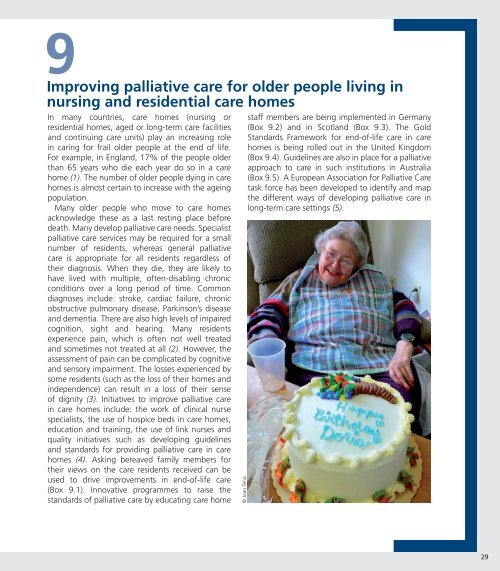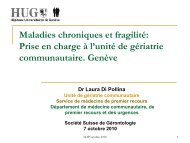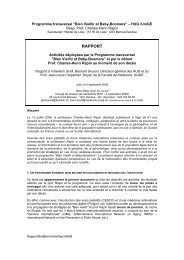Palliative care for older people - World Health Organization ...
Palliative care for older people - World Health Organization ...
Palliative care for older people - World Health Organization ...
You also want an ePaper? Increase the reach of your titles
YUMPU automatically turns print PDFs into web optimized ePapers that Google loves.
9Improving palliative <strong>care</strong> <strong>for</strong> <strong>older</strong> <strong>people</strong> living innursing and residential <strong>care</strong> homesIn many countries, <strong>care</strong> homes (nursing orresidential homes, aged or long-term <strong>care</strong> facilitiesand continuing <strong>care</strong> units) play an increasing rolein caring <strong>for</strong> frail <strong>older</strong> <strong>people</strong> at the end of life.For example, in England, 17% of the <strong>people</strong> <strong>older</strong>than 65 years who die each year do so in a <strong>care</strong>home (1). The number of <strong>older</strong> <strong>people</strong> dying in <strong>care</strong>homes is almost certain to increase with the ageingpopulation.Many <strong>older</strong> <strong>people</strong> who move to <strong>care</strong> homesacknowledge these as a last resting place be<strong>for</strong>edeath. Many develop palliative <strong>care</strong> needs. Specialistpalliative <strong>care</strong> services may be required <strong>for</strong> a smallnumber of residents, whereas general palliative<strong>care</strong> is appropriate <strong>for</strong> all residents regardless oftheir diagnosis. When they die, they are likely tohave lived with multiple, often-disabling chronicconditions over a long period of time. Commondiagnoses include: stroke, cardiac failure, chronicobstructive pulmonary disease, Parkinson’s diseaseand dementia. There are also high levels of impairedcognition, sight and hearing. Many residentsexperience pain, which is often not well treatedand sometimes not treated at all (2). However, theassessment of pain can be complicated by cognitiveand sensory impairment. The losses experienced bysome residents (such as the loss of their homes andindependence) can result in a loss of their senseof dignity (3). Initiatives to improve palliative <strong>care</strong>in <strong>care</strong> homes include: the work of clinical nursespecialists, the use of hospice beds in <strong>care</strong> homes,education and training, the use of link nurses andquality initiatives such as developing guidelinesand standards <strong>for</strong> providing palliative <strong>care</strong> in <strong>care</strong>homes (4). Asking bereaved family members <strong>for</strong>their views on the <strong>care</strong> residents received can beused to drive improvements in end-of-life <strong>care</strong>(Box 9.1). Innovative programmes to raise thestandards of palliative <strong>care</strong> by educating <strong>care</strong> home© Joan Tenostaff members are being implemented in Germany(Box 9.2) and in Scotland (Box 9.3). The GoldStandards Framework <strong>for</strong> end-of-life <strong>care</strong> in <strong>care</strong>homes is being rolled out in the United Kingdom(Box 9.4). Guidelines are also in place <strong>for</strong> a palliativeapproach to <strong>care</strong> in such institutions in Australia(Box 9.5). A European Association <strong>for</strong> <strong>Palliative</strong> Caretask <strong>for</strong>ce has been developed to identify and mapthe different ways of developing palliative <strong>care</strong> inlong-term <strong>care</strong> settings (5).29
















